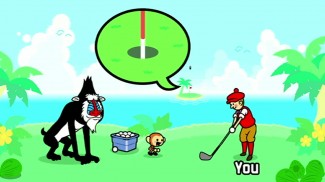Ghostwire Tokyo
LQ: 9.7
Recommended Age: 12+
Skills Used: Flexibility, Working Memory, Reading
Rhythym Heaven Fever is a music-based game that challenges the player with pressing certain buttons in time with increasingly complex rhythms. At the start of each level, the player is told what buttons to press and when to press them, learning various audio and visual cues to get the timing right. In one stage, for instance, the player must press a single button to kick footballs, basketballs, and soccer balls bouncing into the screen. Each ball bounces to a unique rhythm, and can be identified by its look and the sound of its bounce. The game awards points based on how well players follow the beat, and if enough points are earned new levels become unlocked. There is no violence or otherwise inappropriate content in this game, but some challenges may be too difficult for very young players, so we recommend Rhythm Heaven Fever for children ages 7 and up.
Managing our actions, feelings, and behaviors.
 As the player follows along to the beat, visual and audible cues signal him when to press certain buttons in sync with the music. Timing is very important, and if the player acts too impulsively he will likely have trouble staying on beat. It is important not jump the gun, so to speak, because doing so will cause the player to continually press buttons too early resulting in a lower score.
As the player follows along to the beat, visual and audible cues signal him when to press certain buttons in sync with the music. Timing is very important, and if the player acts too impulsively he will likely have trouble staying on beat. It is important not jump the gun, so to speak, because doing so will cause the player to continually press buttons too early resulting in a lower score.
The game features an introductory "rhythm test" that examines whether the player is hitting buttons before or after the beat, allowing him to practice until he can better control his timing. Furthermore, the levels become more difficult as they go on, building in complexity. It may take several attempts before the player scores well, but becoming agitated or flustered will only hamper his performance and make it more difficult to perfect his timing.
Adapting and adjusting to changing conditions and expectations.
 Each stage has more than one cue that the player must recognize in order get the timing right, As levels continue, more visual and audio cues are introduced, mixing together and building in complexity. Players have to be able to rapidly recognize these cues as they happen, reacting both quickly and accurately. The timing of these cues begin to change as well, with rhythms running together and falling on different beats than before. Since the timing of various cues continually changes, players that struggle to quickly adapt will have trouble earning a good score.
Each stage has more than one cue that the player must recognize in order get the timing right, As levels continue, more visual and audio cues are introduced, mixing together and building in complexity. Players have to be able to rapidly recognize these cues as they happen, reacting both quickly and accurately. The timing of these cues begin to change as well, with rhythms running together and falling on different beats than before. Since the timing of various cues continually changes, players that struggle to quickly adapt will have trouble earning a good score.
All membership plans come with full access to our entire suite of tools learning guides, and resources. Here are a few of the ones we think you’ll like the most: